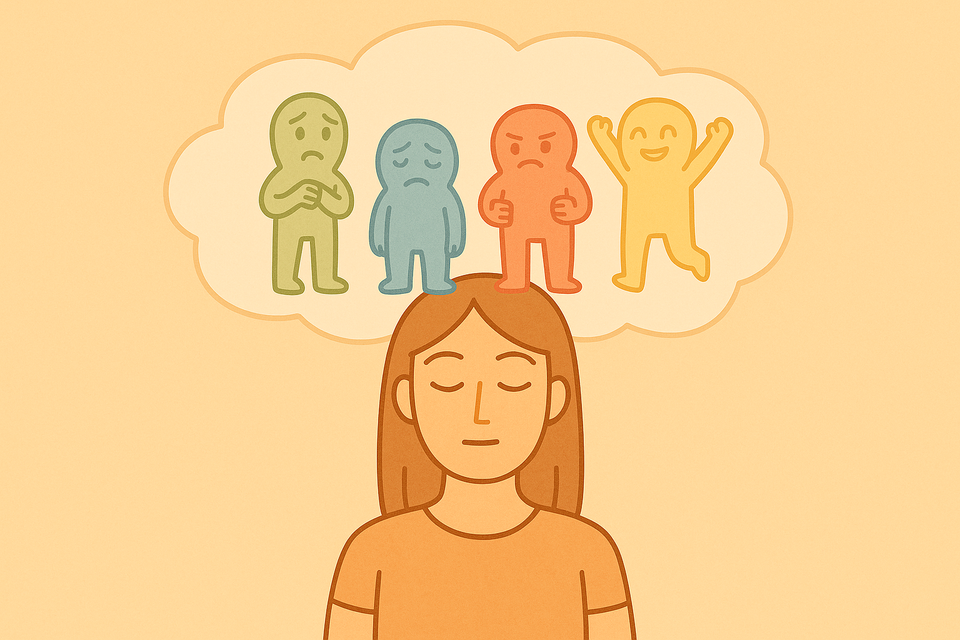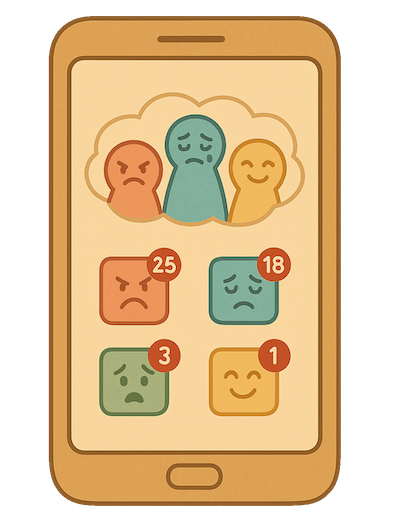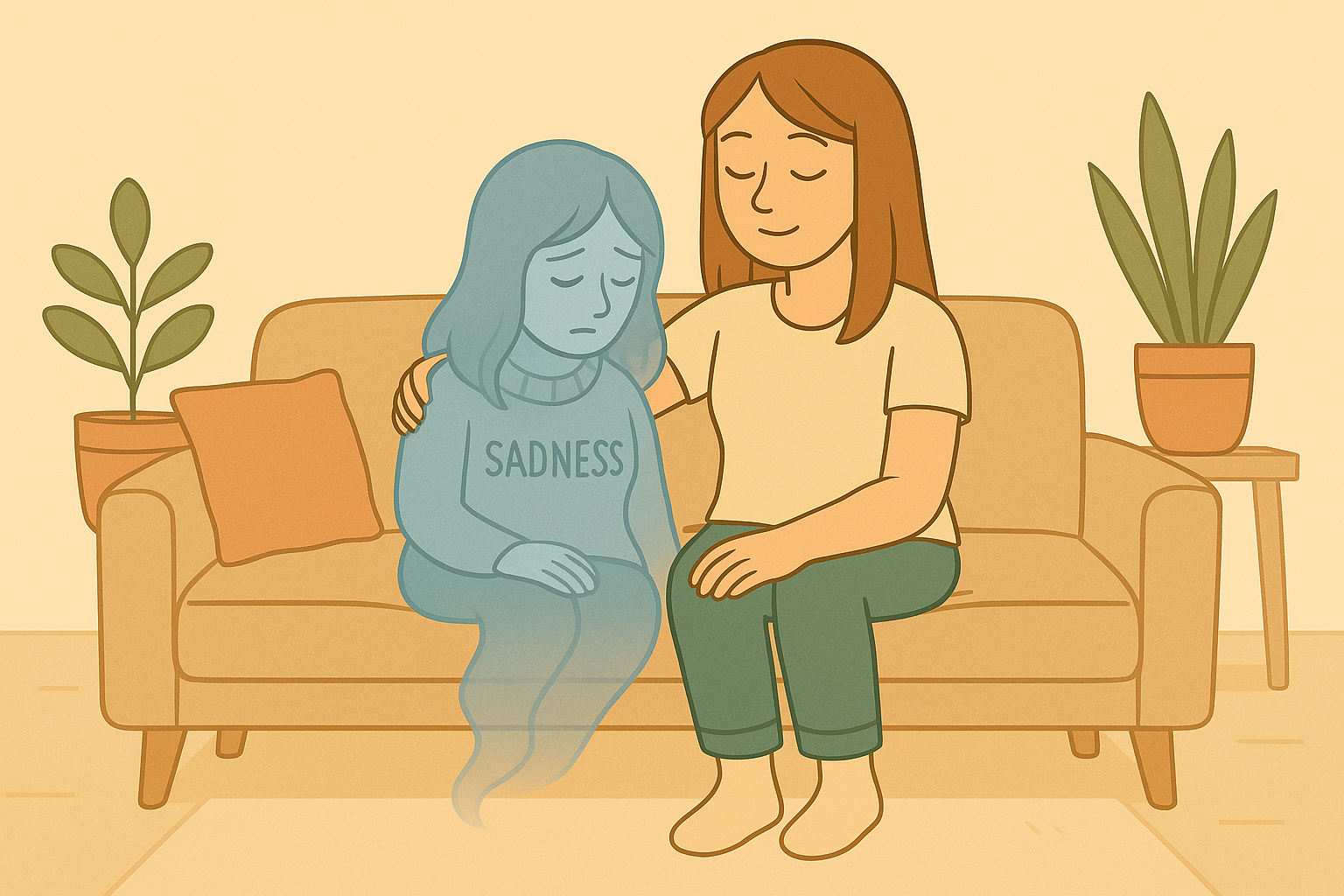What to do with emotions

We all have emotions every day: sadness, fear, anger, joy... They are part of the human experience.
For a long time, like many of us, I believed emotions were just "in my head". A bunch of thoughts, more or less pleasant, that we want to get rid of quickly. And then I discovered that emotions are actually biological in nature, and that they serve a very useful purpose!
The way I handle my emotions changed profoundly once I understood all of this, and it helped a lot in my healing journey, because emotional stress used to trigger a lot of symptoms for me. In this post, I share what helped me live more at peace with my emotions.
Why do we have emotions?
1- Where do they come from?
Far from being just thoughts, emotions are actually biological messages. When we face everyday events, the brain sometimes triggers an instant reaction (long before rational thought) that shows up in the body: release of hormones, muscle tension, changes in heart rate... this is an emotion !
Let's imagine someone disrespecting you at the grocery store. The moment it happens, anger rises: your cheeks flush, you frown, thoughts rush through your mind… your body tenses up, ready to fire back and defend yourself!
The purpose of an emotion is to prepare your body to respond to different kinds of situations — whether they’re threats or opportunities. That's why emotions played a very important role in the evolution of our species.
2- What is the message of emotions?
The threats and opportunities we face today aren’t the same as those of early humans, but the biological mechanism has stayed the same. Emotions are still trying to send us a message:
- Fear mobilizes energy to help us fight or flee.
- Anger prompts us to react to injustice or an offense — for example, when someone crosses your personal boundaries.
- Sadness signals a loss (or the risk of one) and the need for support.
- Disgust warns us about things that may be toxic or harmful.
- Joy helps us notice opportunities, resources, and connections.
Despite all of this, modern society doesn’t place much value on emotions. They’re often seen as embarrassing or even shameful. Adults (sometimes even children) are often expected to control their emotions and hide them.
How to handle emotions?
Burying your emotions deep down can feel reassuring at first, but will cause issues later.
We’ve seen that emotions try to draw our attention to a need. When emotional messages are not listened to, they can pile up in the background... And repressed emotions can sometimes find other ways of expressing themselves: for example, through physical symptoms.

But what can we do about this?
1- Remove fear
Emotions can be uncomfortable and intense, but they are never dangerous and always temporary.
Emotions actually have a fairly short life cycle: once the biological reaction is triggered, it usually takes the body only a few minutes to settle back down — just enough time to process the surge of hormones that comes with it.
Important note: If you tend to ruminate on your emotions, it can feed and reactivate the feeling over and over again, making it last much longer. The final part of this post includes an exercise to help avoid that!
2- Feel your emotions
When we talk about “feeling our emotions” we often picture someone overly emotional — bursting into tears all the time or losing their temper in public at the slightest upset. But feeling your emotions doesn’t necessarily mean showing them to everyone, or suffering because of them!
A practice to welcome emotions

When an emotion comes knocking at your door, take a moment for yourself.
Identify the emotion (is it Anger? is it Sadness?) and invite it in your inner world. Sit with it and offer it a bit of support, without judging it.
There's no need to talk to it or analyze it. Deep down, you already know why it's here. Thinking about it in detail won’t add any value right now.
Try to feel the emotion in your body. What sensations do you notice? Where can you feel them? Each emotion can create its own sensations. Just observe, without judgment.
Let your emotion move at its own pace. There is nothing more you need to do. It will fade on its own, because you've listened to its message.
Trust your body. It will only offer emotions that you can handle. Be more cautious about the urge to fight your emotions, catastrophic thinking and rumination: Those tend to overwhelm the nervous system more easily.
Conclusion
My healing journey has been full of emotions. When I first got unwell, I was very angry. The illness had stolen my career, my body, my ability to enjoy life and my independence. Later on, my slow progress often brought frustration and discouragement. It's absolutely normal to feel a lot of emotions when we face such challenges.
Welcoming the emotional roller coaster is part of the journey. Give yourself as much compassion as you can. Make some space for your emotions, and give yourself enough time to process them.
This knowledge is drawn in part from the work of scientist Candace Pert and her book Molecules of Emotion.
